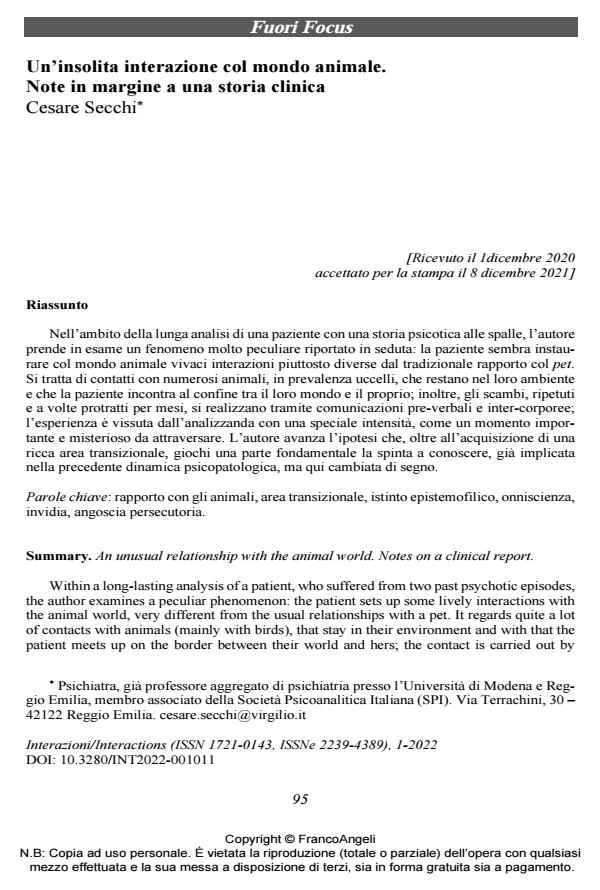An unusual relationship with the animal world. Notes on a clinical report
Journal title INTERAZIONI
Author/s Cesare Secchi
Publishing Year 2022 Issue 2022/1
Language Italian Pages 15 P. 95-109 File size 196 KB
DOI 10.3280/INT2022-001011
DOI is like a bar code for intellectual property: to have more infomation
click here
Below, you can see the article first page
If you want to buy this article in PDF format, you can do it, following the instructions to buy download credits

FrancoAngeli is member of Publishers International Linking Association, Inc (PILA), a not-for-profit association which run the CrossRef service enabling links to and from online scholarly content.
Within a long-lasting analysis of a patient, who suffered from two past psychotic epi-sodes, the author examines a peculiar phenomenon: the patient sets up some lively interactions with the animal world, very different from the usual relationships with a pet. It regards quite a lot of contacts with animals (mainly with birds), that stay in their environment and with that the patient meets up on the border between their world and hers; the contact is carried out by means of pre-verbal and body language; the experience has got a special intensity as an important and mysterious moment for both. According to the author, in addition to the rich transitional area development, for the patient the motivation to know, the epistemophilic drive, be-fore involved in the patient’s dynamic psychopathology, is paramount in these contacts in a new libidinal way.
Keywords: relationship with animals, transitional area, epistemophilic instinct, omniscience, envy, persecutory anxiety.
Cesare Secchi, Un’insolita interazione col mondo animale. Note in margine a una storia clinica in "INTERAZIONI" 1/2022, pp 95-109, DOI: 10.3280/INT2022-001011